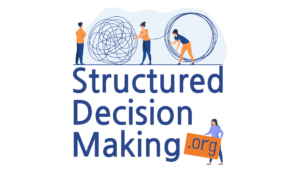Strategy Tables
When the number and diversity of individual actions under consideration are considerable, and/or when there are interactions among the actions that mean that some actions make sense together and others don’t, it may make sense to combine individual actions into strategies that can be compared. A strategy is a logically consistent set of individual actions that, when combined, create a comprehensive response to your decision frame.
A Strategy Table is a visual structuring tool for helping to group logical packages of actions. To build strategies:
- Define categories of actions. For this, it is useful to start with a means-ends diagram or influence diagram. Can actions on the left of your diagram be grouped into logical categories?
- List individual actions in each category. The idea is to keep these simple and high-level. Don’t get bogged down in details at this stage.
- Build strategies. Of course there may be an almost infinite number of possible strategies. Think of guiding themes – big picture conceptual approaches.
A key benefit of using strategy tables is that it enables people to engage interactively in strategic thinking about alternatives, without getting too bogged down in specification details. It’s a powerful tool for collaborative decision making.
The strategy table below was created in a workshop setting for a caribou recovery planning process. The categories of actions include: Population Management, Habitat Protection, and Restoration. The individual actions within each category are listed below the category title. Note that they are general actions that will have to be specified in more detail before the alternative is modeled, but for the purpose of generating creative strategies, staying at a higher level is better.
The table shows two (of several) strategies that were developed. The Population Focused strategy, focuses on immediate actions to augment caribou populations, while The Long Game, focuses on longer term habitat protection and restoration and less on direct population management. Once it is agreed that these two alternative approaches merit exploration, they are further specified by a technical team, then modeled and compared. What is learned from this will suggest further refinements to these strategies, or possibly other, completely different approaches.

Green cells identify the actions included in the strategy

